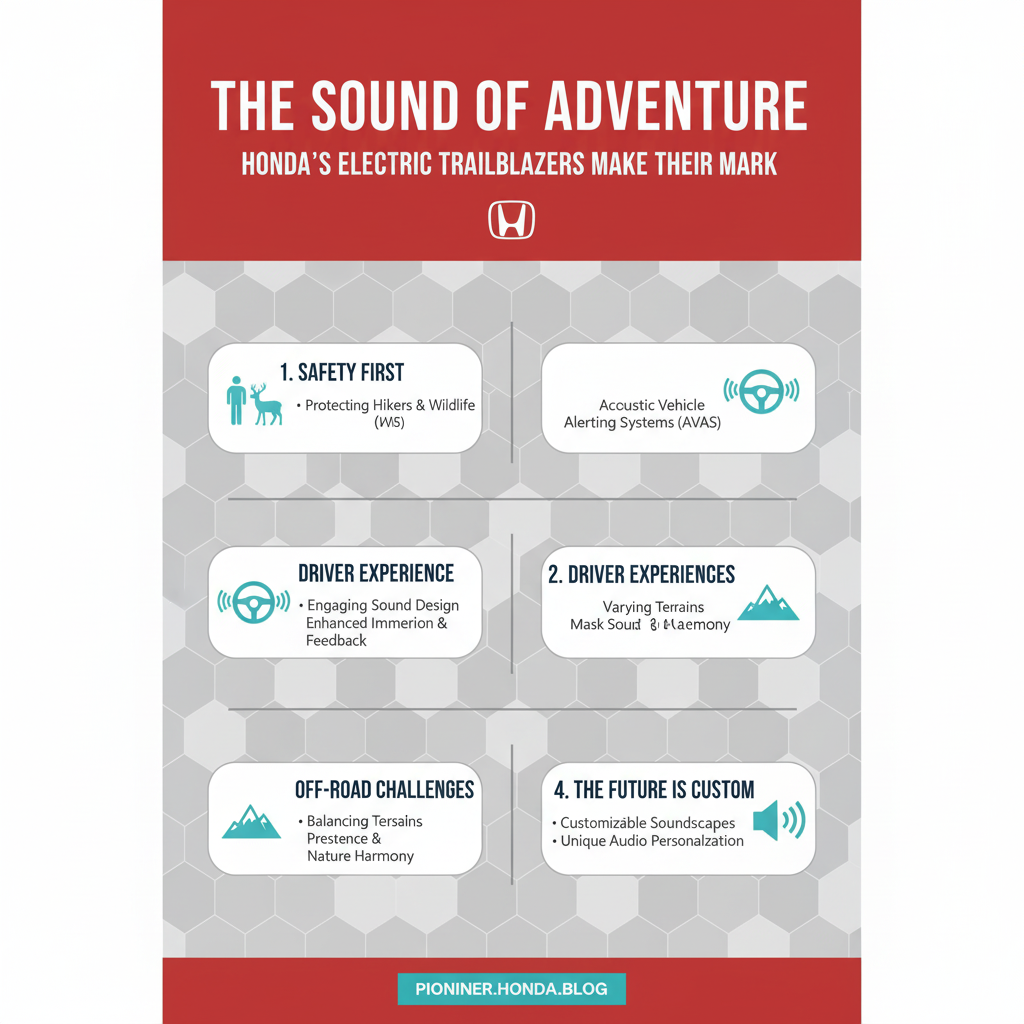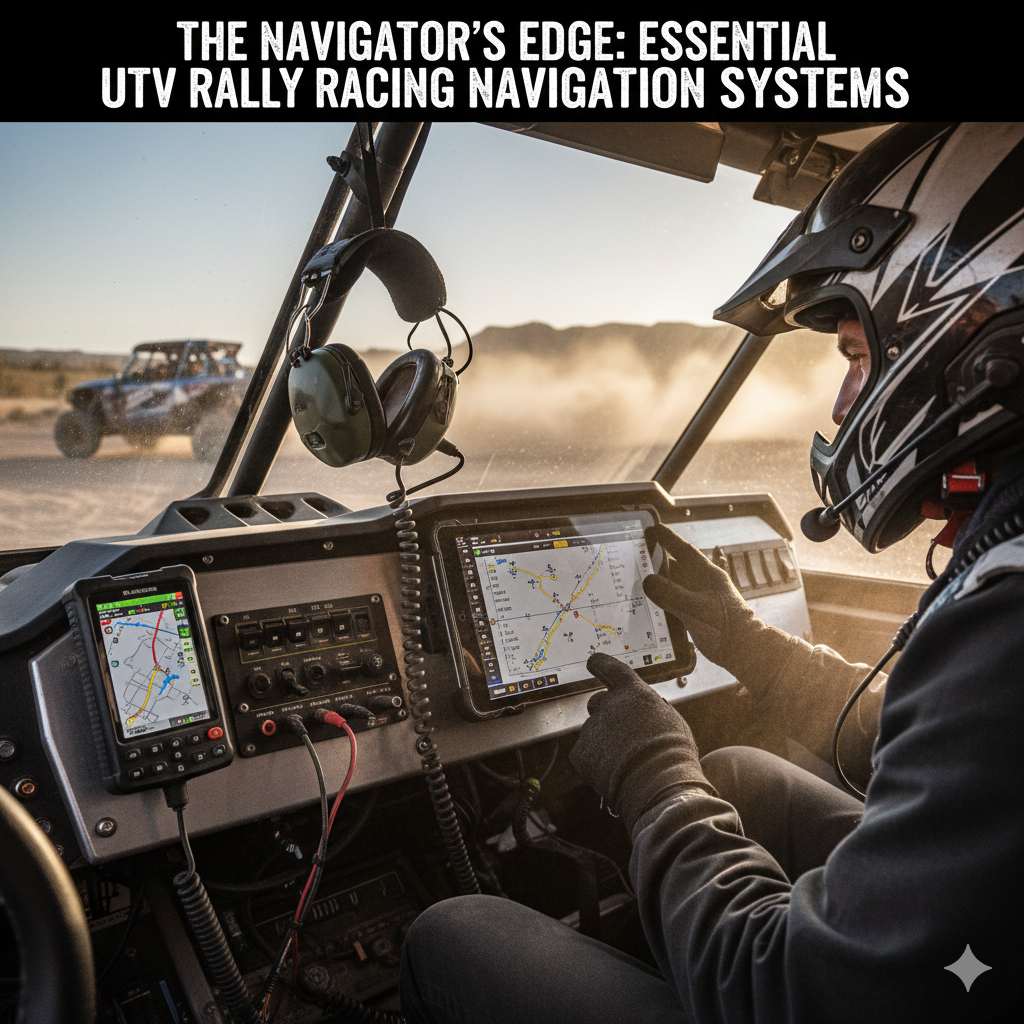There’s a revolution happening on the trails.
It’s quiet, it’s powerful, and it’s electric.
Electric trail vehicles, from UTVs to ATVs, are transforming the off-road experience, offering instant torque, lower maintenance, and a closer connection to nature.
But as the roar of internal combustion engines fades into the background, a new question arises:
what should the future of off-roading sound like?
The silence of electric vehicles, while peaceful, presents a unique set of challenges and opportunities.
It’s not just about missing the rumble of a gas engine; it’s about safety, driver feedback, and our interaction with the wild environments we explore.
This is where the fascinating world of sound enhancement comes in. It’s a field where engineers, sound designers, and even psychologists are working together to craft the perfect auditory experience for the electric off-road revolution.
From federally mandated safety sounds to customizable engine notes that mimic everything from a classic V8 to a futuristic spacecraft, the sound of electric trail vehicles is anything but an afterthought.
It’s a critical component that will shape the future of how we ride.
The Silence of EVs and the Need for Sound
For decades, the sound of an engine has been an integral part of the driving experience, especially in off-road vehicles.
The growl of a powerful engine, the whine of gears, and the crunch of tires on gravel all contribute to the sensory feedback that drivers rely on.
This auditory landscape provides crucial information about the vehicle’s performance, speed, and interaction with the terrain.
With electric vehicles, much of this traditional soundscape disappears.
The electric motor, while incredibly efficient and powerful, operates with a near-silent hum, especially at lower speeds.
This silence, while initially appealing for its environmental benefits and reduced noise pollution, introduces several significant considerations. Firstly, there’s the safety aspect.
Pedestrians, cyclists, and even wildlife have long relied on the sound of approaching vehicles to alert them to potential danger.
A silent vehicle can be a hazard, particularly for those with visual impairments or in busy trail environments where attention might be divided.
Secondly, the lack of auditory feedback can diminish the driver’s sense of connection to the vehicle and the driving experience.
For many off-road enthusiasts, the visceral feedback of an engine is part of the thrill.
Without it, the experience can feel somewhat detached or less engaging.
Finally, there’s the environmental impact.
https://youtu.be/JfNQtGWcjFE?si=RTKWsjfMzv4sz805
While quiet vehicles are generally positive, an entirely silent vehicle in a natural setting might disrupt wildlife in unexpected ways, or conversely, make it harder for humans to detect animals that might be in their path.
These factors highlight why simply being silent isn’t always the optimal solution for electric trail vehicles.
AVAS: Safety and Regulation
The most immediate and critical need for sound enhancement in electric vehicles, including trail vehicles, is safety.
The near-silent operation of EVs at low speeds poses a significant risk to pedestrians, cyclists, and even animals who rely on auditory cues to detect approaching vehicles.
To address this, Acoustic Vehicle Alerting Systems (AVAS) have been mandated in many regions worldwide.
These systems are designed to emit an audible warning sound when an EV is traveling at low speeds, typically below 20-30 km/h, and also when reversing [1].

Videos are added as random thoughts 💭 💭 💭..
AVAS sounds are not arbitrary; they are carefully designed and regulated.
For instance, UN Regulation No. 138 specifies that AVAS-equipped vehicles must emit a continuous sound up to 20 km/h, with volume and pitch varying proportionally to the vehicle’s speed.
This allows pedestrians to gauge the vehicle’s speed and distance.
The sound level is also regulated, with a maximum of 75 dB(A) to ensure audibility without contributing excessively to noise pollution [1].
Beyond mere compliance, AVAS offers an opportunity for sound branding.
Automotive manufacturers can create unique and recognizable sounds that distinguish their electric vehicles.
This can range from natural and organic sounds, like those inspired by wind and water, to more futuristic or even cinematic soundscapes.
The challenge lies in creating sounds that are effective for safety, pleasant to the ear, and align with the brand’s identity, all while avoiding sounds that might be confusing or misleading (e.g., a spacecraft sound making people look up) [1].
For electric trail vehicles, AVAS takes on an added dimension.
While pedestrian safety is still paramount in shared-use areas, the interaction with wildlife becomes a more prominent concern.
Nissan, for example, has explored technologies like ANIMALERT, which reengineers pedestrian alert sounds to protect animals by shooing them off the road with high-frequency alarms [2, 3].
This highlights a crucial area for innovation in off-road EV sound design: creating alerts that are effective for both human and animal safety without causing undue disturbance to natural environments.
References
[1] Ansys Blog. (n.d.). *Acoustic Vehicle Alerting Systems (AVAS) for EVs*. Retrieved from [
[3] Fast Company. (n.d.). *Nissan is developing an alarm to reduce roadkill*. Retrieved from

Sound Design for Driver Experience (Internal Sounds)
Beyond external safety sounds, sound enhancement plays a vital role in the internal experience of electric trail vehicles.
For many drivers, the auditory feedback from a traditional engine is deeply intertwined with the sensation of speed, power, and control.
With the quiet operation of an EV, this connection can be lost, leading to a less engaging or even disorienting driving experience.
This is where active sound design (ASD) comes into play, creating artificial internal sounds that enhance the driver’s perception and enjoyment.
Automakers and sound engineers are meticulously crafting internal soundscapes that provide meaningful feedback to the driver.
These sounds can be designed to mimic the acceleration and deceleration of a powerful engine, providing a sense of speed and responsiveness that the silent electric motor might otherwise lack.
Some manufacturers aim for futuristic, almost sci-fi sounds, while others might offer customizable options that emulate classic V8s or other iconic engine notes.
The goal is to create a harmonious blend of auditory cues that complement the vehicle’s performance and the driver’s expectations.
This internal sound design isn’t just about aesthetics; it also serves a functional purpose.
Speed acceleration feedback (SAF) sounds, for instance, can provide subtle cues about the vehicle’s momentum, helping drivers to better judge their speed and react accordingly.
Advanced driver-assistance system (ADAS) sounds and human-machine interaction (HMI) sounds also contribute to the internal acoustic environment, providing alerts and confirmations that enhance safety and usability.
The art lies in ensuring these sounds are informative without being intrusive, and that they contribute positively to the overall driving experience,

especially in dynamic off-road conditions where precise feedback is crucial.
Off-Road Specific Challenges and Opportunities (Wildlife, Terrain Feedback)
Electric trail vehicles operate in unique environments that present distinct challenges and opportunities for sound enhancement.
Unlike urban settings where the primary concern is pedestrian safety, off-road environments bring wildlife interaction and terrain feedback to the forefront.
The quiet nature of EVs, while beneficial for reducing noise pollution in natural habitats, can also lead to unexpected encounters with animals that are not accustomed to silent vehicles.
One significant challenge is designing sounds that effectively alert wildlife without causing undue stress or disruption.
Research is ongoing into how different species react to various frequencies and sound patterns.
Nissan’s ANIMALERT system, which uses high-frequency alarms to shoo animals off the road, is an example of innovative thinking in this area [2, 3].
The goal is to create a harmonious coexistence where vehicles can traverse natural spaces safely for both humans and animals.
This might involve directional sound projection or adaptive sound profiles that change based on environmental sensors detecting wildlife.
Furthermore, sound plays a crucial role in providing feedback to the driver about the terrain.
The subtle sounds of tires gripping or slipping, suspension working, and obstacles being overcome are all vital cues for an experienced off-road driver.
In a silent EV, these natural sounds might be masked or absent.
Sound enhancement systems can be designed to amplify or even synthesize these crucial auditory cues, providing drivers with a richer understanding of their vehicle’s interaction with the ground.
Imagine a system that subtly enhances the crunch of gravel or the splash of water, giving the driver a more immersive and informative experience without overwhelming them with artificial noise.
This blend of natural and enhanced sounds can elevate the off-road experience, making it safer and more engaging.
The Future of EV Sound
The landscape of sound enhancement for electric vehicles is rapidly evolving, driven by technological advancements, changing regulations, and a deeper understanding of human and animal auditory perception.
The future promises even more sophisticated and personalized sound experiences for electric trail vehicles.
One key area of development is adaptive soundscapes.
Imagine an EV that can dynamically adjust its external and internal sounds based on its environment, speed, and even the driver’s preferences.
In a dense forest, the vehicle might emit softer, more naturalistic sounds to minimize disturbance to wildlife, while on an open trail, it could project a more assertive sound for safety.
Internal sounds could adapt to driving conditions, providing more pronounced feedback during challenging maneuvers and a more serene ambiance during relaxed cruising.
Personalization will also play a significant role.
Just as drivers customize their vehicle’s appearance, they may soon be able to choose from a library of sound profiles.
Want your electric UTV to sound like a classic muscle car, a futuristic hovercraft, or perhaps a gentle breeze?
The technology is emerging to make these choices a reality.
This level of customization not only enhances the driver’s connection to their vehicle but also allows for a more tailored and enjoyable off-road adventure.
Furthermore, the integration of artificial intelligence and advanced sensor technology will refine sound design.
AI could learn driver preferences, anticipate potential hazards, and generate sounds that are not only aesthetically pleasing but also highly functional.
Sensors could detect approaching wildlife or changes in terrain, triggering specific auditory cues to enhance awareness and safety.
The goal is to move beyond simple warning sounds to create an intelligent, interactive auditory experience that is seamlessly integrated with the vehicle’s operation and the surrounding environment.
The future of EV sound is not about recreating the past, but about innovating for a new era of mobility.
It’s about harnessing the power of sound to make electric trail vehicles safer, more engaging, and more harmonious with the natural world they explore.
The possibilities are as vast and exciting as the trails themselves.
Conclusion: The Symphony of the Silent Trail
The journey into sound enhancement for electric trail vehicles is a fascinating exploration of technology, safety, and human-nature interaction.
What began as a necessity to address the safety implications of silent EVs has evolved into a rich field of innovation, where sound designers are crafting immersive and informative auditory experiences.
From the regulated alerts of AVAS systems that protect pedestrians and wildlife, to the personalized internal soundscapes that connect drivers more deeply with their machines and the terrain, sound is proving to be an indispensable element in the electric off-road revolution.
The future of electric trail vehicles is not one of absolute silence, but rather one of carefully curated sound.
It’s a future where technology allows us to be both environmentally conscious and audibly aware,
where the thrill of the trail is enhanced by intelligent sound design, and where the delicate balance between human adventure and natural preservation is maintained.
As electric trail vehicles continue to gain traction, the sounds they make—or are designed to make—will be just as important as their power, range, and capability.
So, the next time you encounter an electric trail vehicle, listen closely.
You might just be hearing the carefully composed symphony of the silent trail, a testament to the thoughtful engineering that makes every off-road adventure safer, more engaging, and more harmonious.




